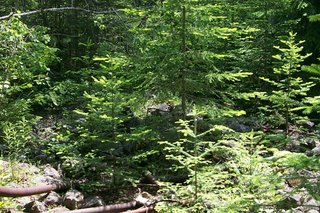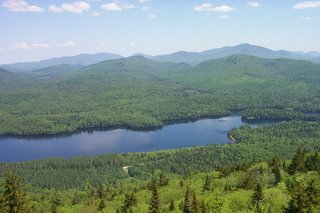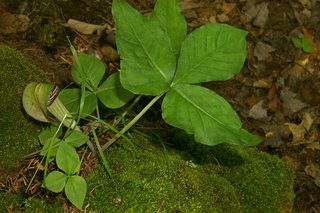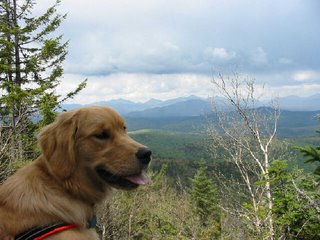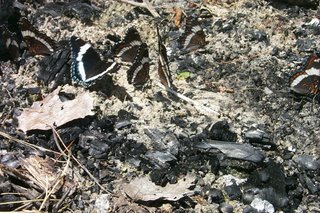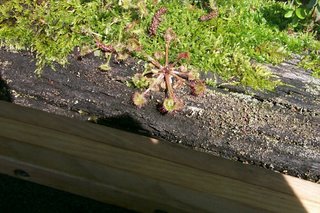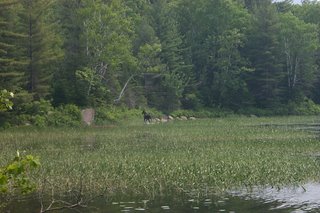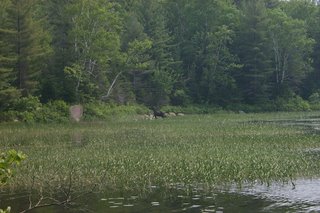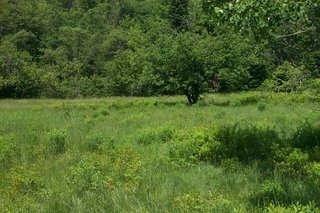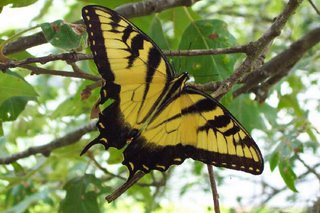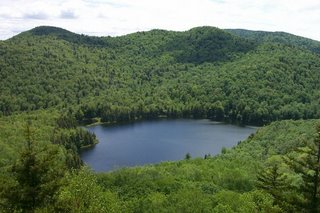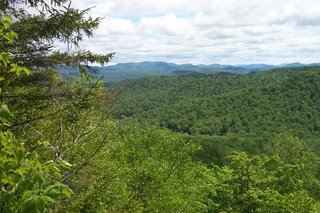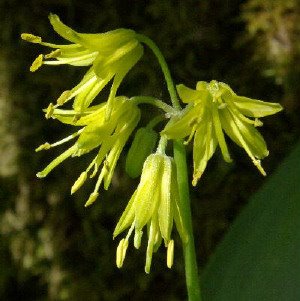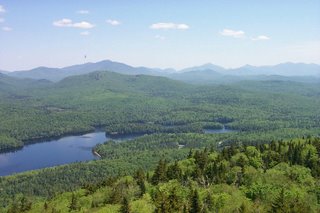Our mountain road has been washed out by yesterday's deluge. According to my rain gauge, we had a minimum of 8 inches at our house yesterday. Last night the stream that had been trickling in a deep gully out back rose well over several feet to wash over the natural land bridge. Hiking was out of the question today. I'd just do damage to the trails. And many streams were unfordable. Heavy rains are forecast again for tonight and tomorrow morning.
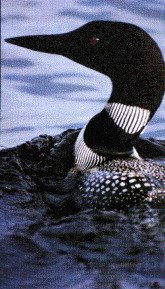
I'm very worried about all the birds that are nesting now. Heavy rains are one thing, but we had numerous cloudbursts yesterday, which could have flooded some nests to the point where eggs and young were lost or destroyed. This scenario has been the case this spring for nesting
loons in the area during other rainstorms.
Have you noticed that rainfall has been getting heavier and heavier? I guess you don't need to be a meteorologist to have observed that. But I'm not talking about this spring's rain being heavier than last spring's. Since the early 1970s, rainstorms have been producing heavier and heavier downpours, according to many U.S. climate studies.
Is it global warming?
Many climatologists and meteorologists say it is. The warmer the land and air temperatures, the greater the amount of water that evaporates. With more water in the air, there's more cloudiness and hence, more rain. Not only that, but warmer air can actually hold more water than cold air. Sort of a double whammy.
Now, listen, I'm not the type who tries to search for the silver lining, believe me. But the road washout next to the swamp pushed sand into the water so that there's a little beach now. Sun is forecast for tomorrow afternoon, and if it shows its face, I'll take my Hornbeck boat over there and study dragonflies.

